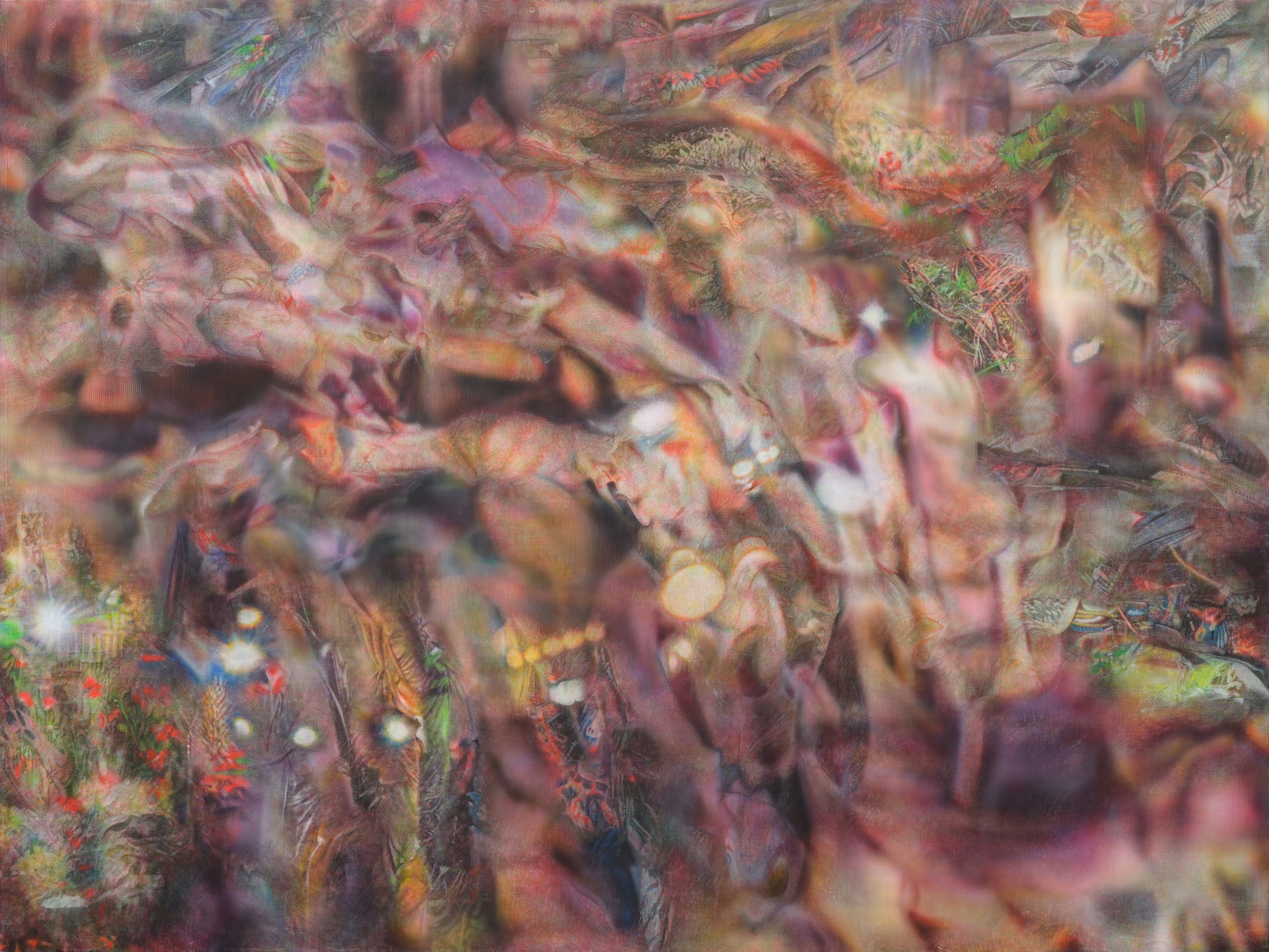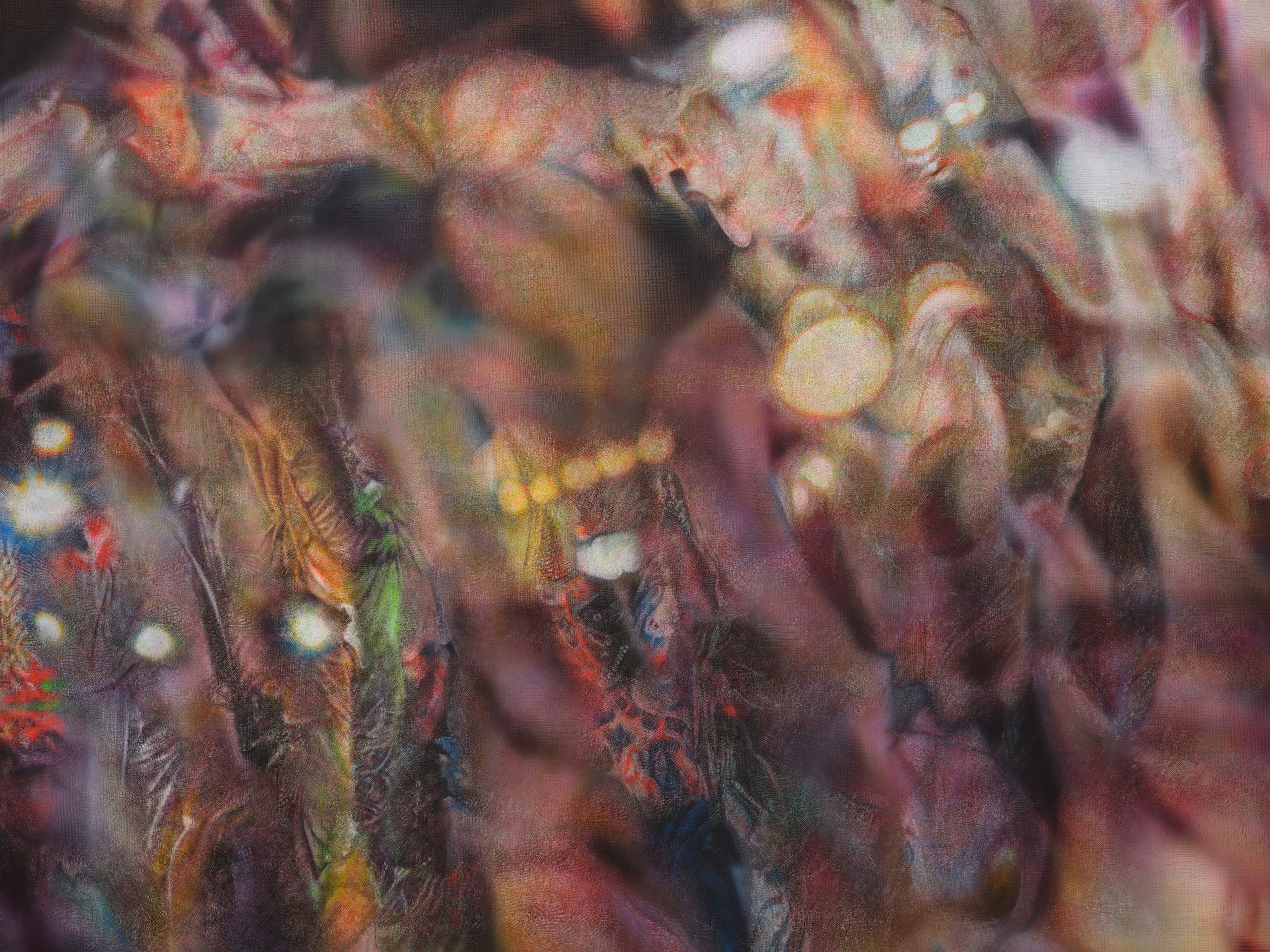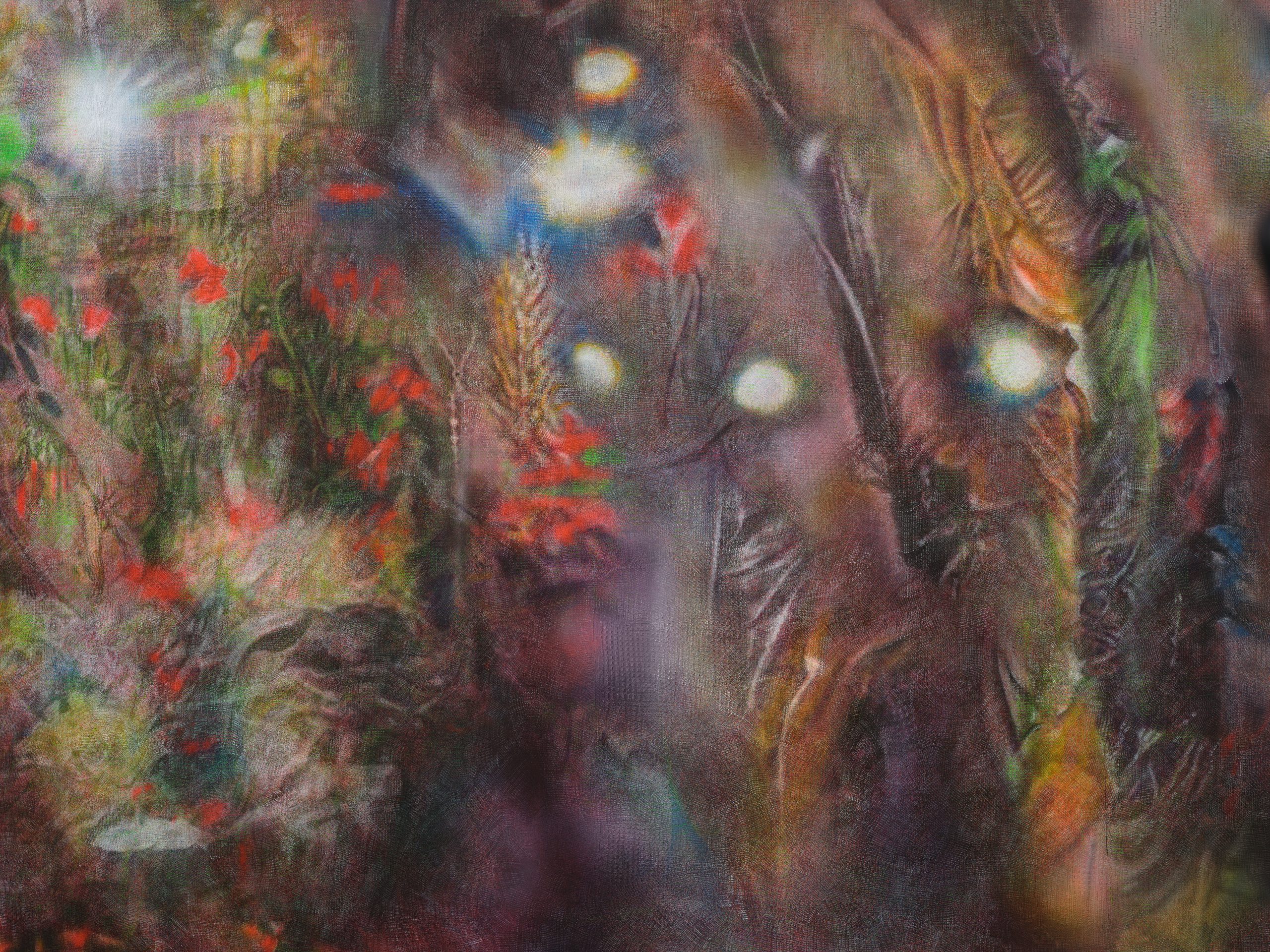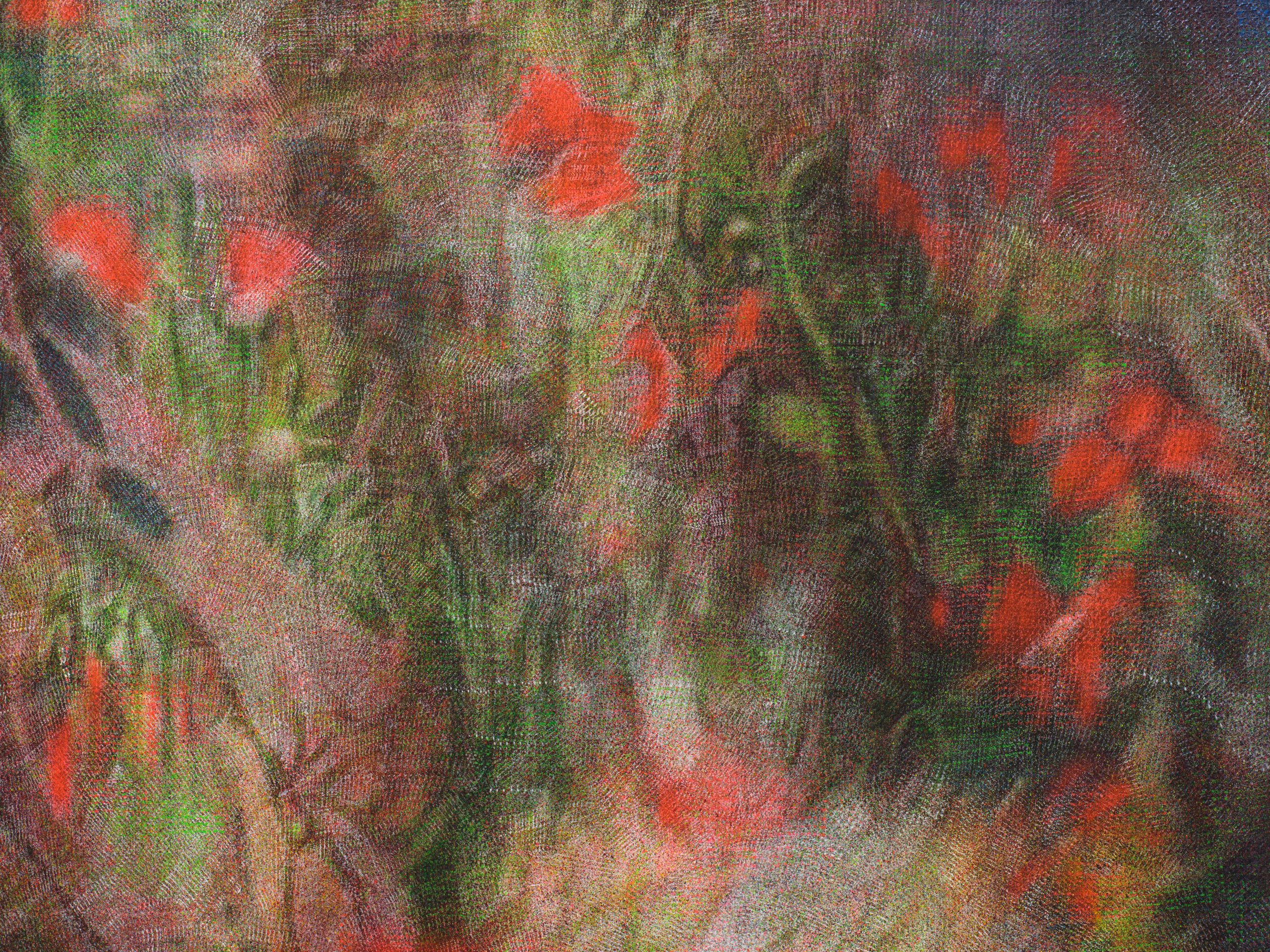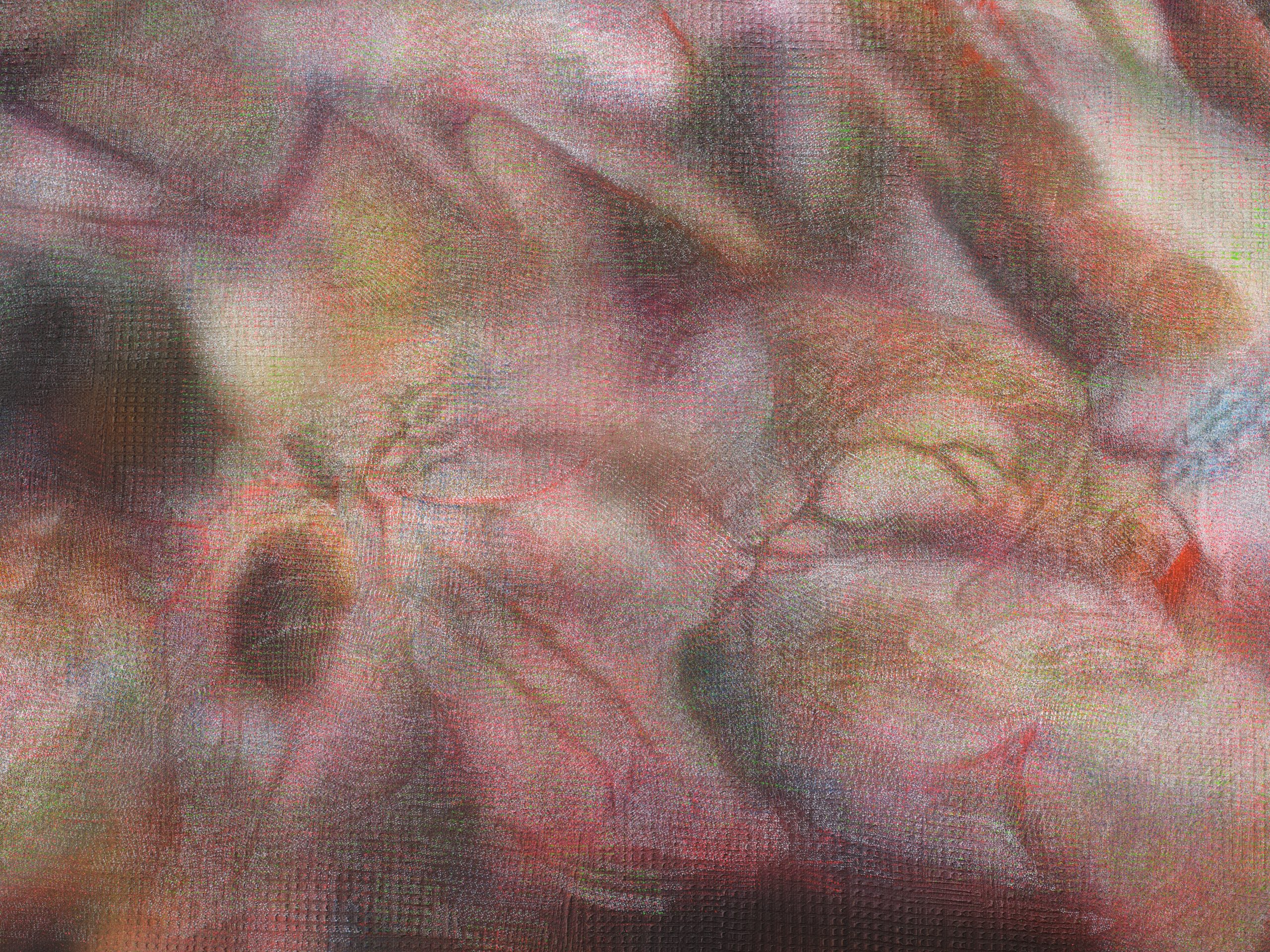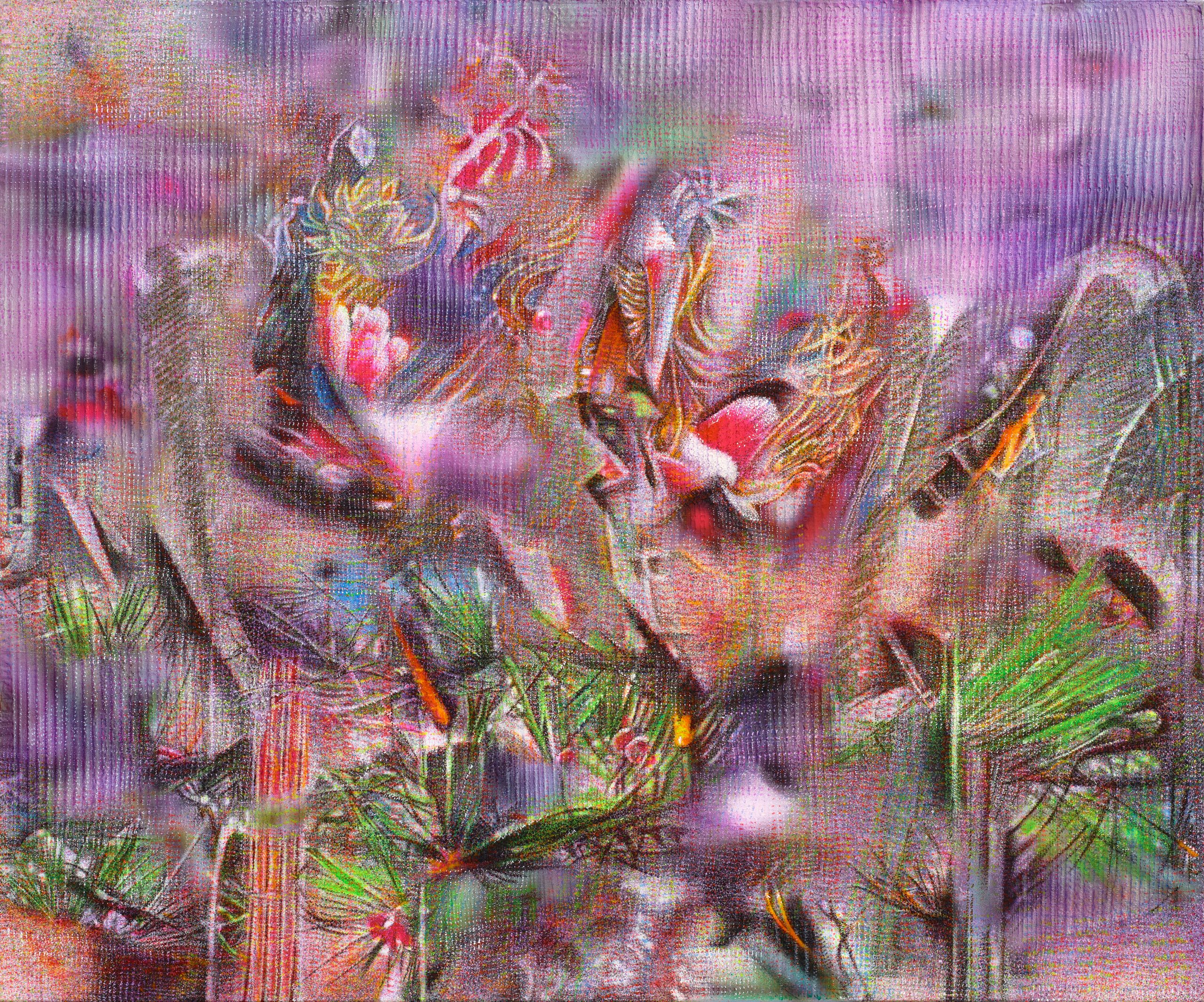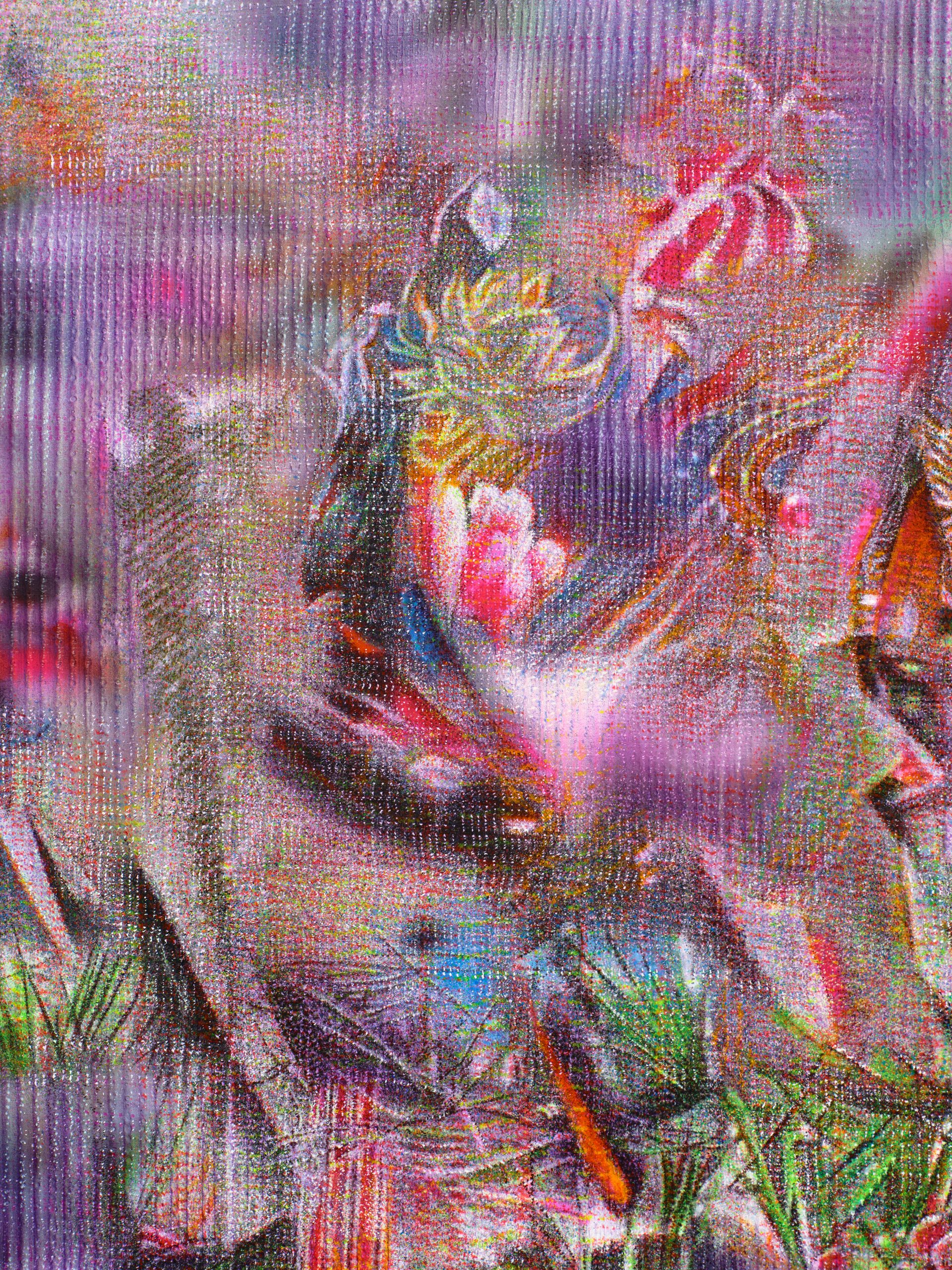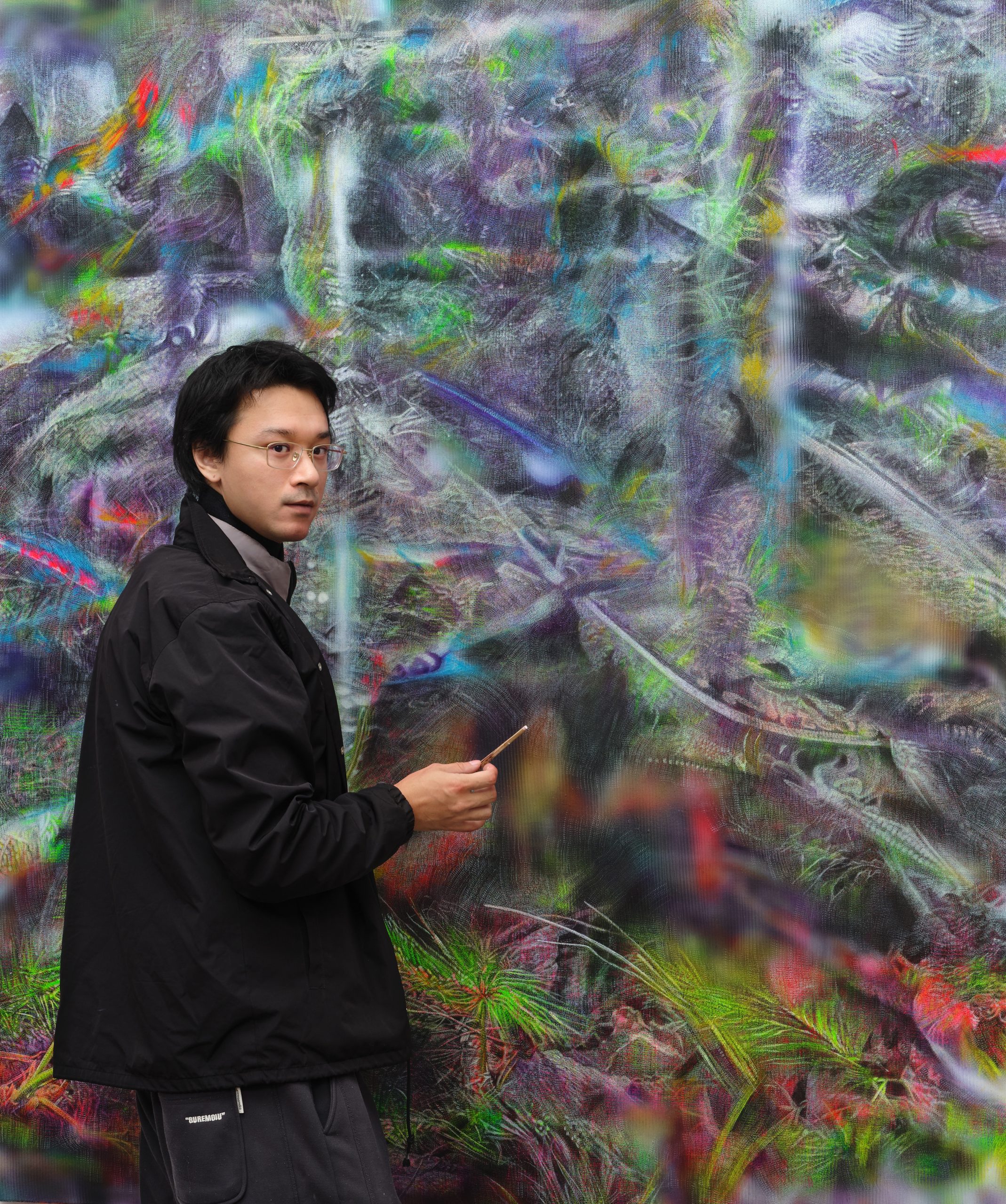
Where things happen #30 — January 2025
The work of Chinese artist Bai Yiyi visualizes the simultaneity and interconnectivity between beings as part of a broader network and ecosystem of vital relations and interdependencies.
Yiyi’s works exist in a fluid limbo, where transformative metamorphosis between organic and artificial is still a potential state. The blur and glitch meticulously replicated with oil paintings on canvas suggest a reality of continuous mutation and transformation. At the same time, this flowing nature of his canvases appears as a projection of human consciousness, when minds and memories elaborate the external continuous, overlawyered flux of events, experiences, emotions and subsequent psychological responses. In this sense, with his unique approach to painting, Yiyi embarked on this attempt to translate both a somatosensorial and mnemonic experience in the canvas’s single spatial and temporal frame.
When we met the artist during Shanghai Art Week last November, Bai Yiyi had just delivered some canvases that were shown at the fairs but was already working on some new ones. Once one enters Yiyi’s space of creation, it is clear that painting is more a spontaneous need and a personal ritual that allows him to channel into the canvas the energies and visions his soul captures, intakes and feels the need to convey.
His spacious studio is nested inside a more significant industrial complex, a little out from the central area of Shanghai. For now, he’s the only artist working there, but they are expecting more to join soon in the region, which offers bigger spaces for lower prices. As he tells us, with his studio manager, Didi Yu, moved there one year ago, and the ample space has allowed Bai Yiyi to start working on more large and immersive formats, which add another level of engagement to his canvases.
When we visited the artist’s studio, an ambitious monumental canvas, 3 meters per 4, created a complex landscape or dreamscape of fluid elements emerging from the dense stratification of marks and the brimming painting tides. Bai Yiyi’s paintings invite the gaze to fluctuate and surrender to a cosmos of sensations and visual suggestions, engaging in an endless exploration of details, symbols and textures.
As Bai Yiyi would explain and show us, dense, elaborate canvases result from an enduring process of accumulation of painterly passages and layers on the painting’s surface, using different brushes. So all of the ones he uses, as he shows us, are calligraphy traditional brushes primarily used in Japan.
With a good mix of meticulous and improvisation, Yiyi moves on the canvas, surrendering to the possible evolution of the image as he proceeds in this immersion end emersion.
This systematic layering of color and form without actual final resolution allows Yiyi to map out the canvas, projecting multiple yet intertwined spatial and temporal dimensions implied in the act of painting as something able to connect the inward eye and the outward perception.
Yiyi’s art offers a dynamic experience, where the interaction between the art and the viewer creates new, evolving meanings that invite symbolic interpretations to “seep” into one another.
Playing and experimenting with the overlaying of the different strata and the possible interferences within, Yiyi thoroughly explores the porosity of the image and its permeability, as intended, both in physical and more metaphorical terms. Generating an open-ended imagery that combines countless elements from very different sources, Yiyi’s paintings eventually evoke multiple meanings, interpretations, or emotional resonances by interacting with the viewer’s imagination, cultural background, or personal experiences. Avoid explicit representations, those paintings exist, in fact, in this revelatory limbo between figuration and abstraction. Blurred or fainted outlines, partial figures and the continuously intermitted collapsing between foreground and background suggest this interconnectedness or fluidity between ideas, realms, or experiences, embracing as the only possible reality the one conceived as a flux.
In the past, Bai Yiyi had been initially focused more on the experiences and relations between humans and machines and the endless flux of digital images. Studying multimedia at the university was highly informative for the artist to gain full awareness of the inevitable evolutionary process of humanity’s future, which saw a growing integration between the physical body and experience and its mechanical integration and expansion. His paintings at the time manifest this attempt to recollect, elaborate, filter and distill this continuous flux between media visual inputs and psychological and emotional responses to them. In particular, the artist was fascinated by how all those data and information were essentially abstract and could abstract objective things and processes in the real world.
From those reflections, Yiyi reached a form of liminal abstraction that still preserved and bled a chaotic ensemble of fragments of visual information. In particular, Yiyi’s last show at the BANK Shanghai presented an investigation of a shared feeling he perceived during the pandemic in his generation, then translated into societal behaviors, attitudes and visual expressions as he put it, “prolonged pervasive pain, a persistent sense of depression and anxiety.
From this concern, Yiyi’s research led him to explore the functioning and possibilities of consciousness, transitioning from an individual and personal level to a collective, societal, and ultimately universal one that connects all things.
As he comments, “Consciousness is a subjective entity for individuals, while the collective consciousness, composed of groups of people, carries the emotions of the human group and the trajectory of life’s journey.”
Most recently the artist practice has extended to an exploration of a broader universal interconnection between humans and all beings as part of a mysterious cosmic order. “What I am contemplating is the perception and expression of collective consciousness, and also the trajectory and energy behind these collective consciousnesses when they are linked together,” Yiyi explains.
Embracing the traditional notion of “Dao” and the idea of a collective consciousness governing all life processes to confront this sense of annihilation and societal anxiety perceived before, Yiyi’s seemingly abstract yet densely symbolic paintings visualize this multifaceted fluid com penetrability of all things, envisioning alternative synthetic and symbiotic existential dimensions that could allow mutual survival and more sustainable energetic health preservation.
As he explains, “In the Chinese philosophy of “DAO,” the idea is to integrate oneself with nature and the cosmos, becoming a part of it. The trajectory of healing energy and the sublimation of human collective consciousness.”
Yiyi’s art is deeply imbued with those traditional spiritual notions and ancient biological and medical wisdom, anchored in the energetic relations involved in being, existing in, and relating to a specific environment.
Yiyi eventually visualizes how everything that surrounds or is within us is just particles, energies and forces in continuous fertile flux. Notably, this notion of Dao, the flow of life flow of life and the universe’s constant transformation, translated by Bai Yiyi in his work, significantly coincides with this idea of reality as impermanent and ever-changing, which we also find in Ancient Greece. Heraclitus famously once stated, “You cannot step into the same river twice,” highlighting that change is the fundamental nature of reality: the universe is in perpetual flux, with opposites constantly transforming into one another.
In this sense, Yiyi’s paintings resist the stable and indelible character of painting as a “snapshot” of reality and distillation and filter of events to embrace a fluid dimension of paintings that embrace visual elements as they come in a relentless flow closer to how we experience everything in our life.
As Bai Yiyi explains to us, the most recent evolution of his work has explored ancient Chinese Medicine and the connections between Nature and body energies. Exploring this holistic vision, which perceives as a single entity, body and soul, Yiyi’s future series aims to visualize and envision these mysterious energetic forces that bind natural and human networks to revive ways in which humans can integrate with the cosmic and natural developmental laws in, heal the body through nature, and thereby sublimate the spirit.
The next project he would like to work on will try to tap into these alchemic processes, drawing from ancient wisdom and natural remedies. As he explains, what he envisions as a multimedia installation made of multiple elements and paintings will try only to illustrate the practical application of ” Celestial Habitat, “a concept that arranges modern living spaces for optimal holistic effect but also draws out the inherent complexity of its alignment with the natural and cosmic order in contemporary life. Inspired by shamanic rituals that activate this “external Alchemy” and “Internal Alchemy and trying to translate those processes through painting, the artist aims to stage through documentary elements and paintings an entire narrative that can inspire and encourage alternative forms of healing.
“This project is an extension of the narrative about human consciousness energy and the trajectory of consciousness operation regarding “positive + energy and negative – energy” caused by the widespread sadness and unknown, indescribable manipulative will in world tragedies from 2023 to 2024,” he says.
From this statement, we can understand how Yiyi’s works intersect and tackle some of the most relevant points of contemporary existence today, from the more societal, aesthetical and implications of increasingly complexly intertwined relations and interactions between human non-humans to a more energetic, psychological and spiritual need for a collective reawakening. A reawakening of consciousness, calls us to recognize the profound truth of our existence, which is deeply intertwined with a network of vital relationships with other beings and forces essential for our mutual survival.






















